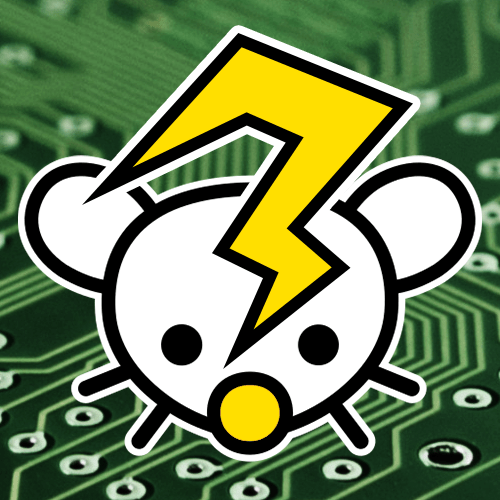- 44 Posts
- 274 Comments

 6·6 days ago
6·6 days agoTAVR’s been around for a few years, but not everyone qualifies for TAVR: https://www.mayoclinic.org/tests-procedures/transcatheter-aortic-valve-replacement/about/pac-20384698
They’ve also been doing Davinci robotic-assisted mitral valve replacement for 20 years: https://pmc.ncbi.nlm.nih.gov/articles/PMC5135549/
But this procedure sounds like it’s for those who can’t use any of the other methods. Hope it catches on fast. Recovery from open-heart surgery is a nightmare.
I backed all their original Kickstarters. After they announced the revival, I dug them up. Only one would charge. Wonder if their new app will be backward compatible with the old watches.
What advice would you give your younger self?
 2·8 days ago
2·8 days agoThey’re using fine-tuning on top of existing models. Still useful, but the headline implies creating foundation models, which is still the domain of big iron.

 17·10 days ago
17·10 days agoAnother thing to watch out for is fake third-party utilities that will claim they will fix this problem. Unless directly provided from an official Distro itself and is verified, be careful what you download and install.
This is a golden opportunity for malicious actors to get bad code into systems.

 5·11 days ago
5·11 days agoIf it’s never seen Windows you may be fine.
The problem is mostly for systems that dual-boot or had Windows at one point, but got Linux installed on top. A lot of people use old Lenovo, HP, or Dell computers and repurpose them for Linux. Those are the ones that may get bit.

 6·11 days ago
6·11 days agoWas curious why it was limited to 50kW. This explains it:
https://www.caranddriver.com/shopping-advice/a60788759/tested-best-nacs-to-ccs-adapters/
If you currently own an electric vehicle that uses an 800-volt or higher battery architecture, such as a Hyundai Ioniq 6, Porsche Taycan, or Lucid Air, you’re able to use Tesla Superchargers with a Magic Dock and Tesla app, but you may experience slow charging speeds. Why? Currently, the Magic Dock chargers have a maximum output of 500 volts, as they were originally designed for only Teslas—which up until the Cybertruck launches, all used a 400-volt battery system like most EVs. Meanwhile, 800-volt EVs have an onboard inverter to make them compatible, but that inverter is limited by the hardware the automaker specified, which tends to be from 50 to 150 kW. This makes them unable to charge at their peak DC fast-charge rates at Tesla’s 500-volt Superchargers, whereas fast-chargers elsewhere in the public charging infrastructure, such as Electrify America, have a 1000-volt maximum.
Green Jello or Apple Sauce cup?

 6·11 days ago
6·11 days agoThe Windows update loads a chain of trust that tells the bootloader the device is OK and your version of Windows is real and your full-disk-encryption is fine. Linux folks don’t have (or need) all that. They can create their own chain of trust if they want, but they don’t have read/write access to the Microsoft one.
If they did, we would be reading a completely different article starting with why the world was on fire.

 67·11 days ago
67·11 days agoIf you start with a reasonably recent Windows machine, there’s a TPM with secure boot (and MS keys) enabled. If setting up dualboot Windows/Linux, you’re going through BIOS/UEFI, so expiring keys will affect you. Booting into Windows and doing an update should fix the problem.
If you disabled secureboot/FDE, then installed Linux and left it at that, you should be OK.
But under Linux, those who reenable fulldisk encryption or secure boot via the TPM may be impacted by this, and since they’ve removed Windows, they may be screwed: https://allthings.how/how-to-enable-tpm-encryption-and-secure-boot-on-ubuntu-24-04/

 6·11 days ago
6·11 days agoStealing this from a Mike Birbiglia joke:
Which one of you ‘married up?’

 2·12 days ago
2·12 days agoThis could be a total longshot, but if you have a set of devices with HDMI cables and CEC enabled, if a cable fails or a new device comes in that isn’t doing proper termination, it can affect the whole network.
Maybe try unplugging all devices, restarting the TV, then adding them back one by one and see if it still happens.
It can totally be a hardware or firmware issue on the TV side, but at least, this is a cheap and easy test.

 7·14 days ago
7·14 days agoIn my old consulting days I got a lot of referrals from startups who had gone down the rabbithole making ‘cross-platform’ mobile apps. They had all gone as far as they could, then hit a brick wall with performance or lack of technical support. The solution always came down to taking the hit and rewriting it properly, or trudging onward.
Getting a lot of the same vibe with this ‘casual AI coder’ hype. Best of luck.
Always-on would be distracting. Be more practical if it had an on/off switch. At least a dimmer.

 3·17 days ago
3·17 days ago
Eugenicists everywhere.

 1·18 days ago
1·18 days agoFirst time seeing one of those double-cable chargers.
Keeps out the conspiracy-based posts and only lets facts through.






Why did the snail cross the road?
Not clear. Let it cross the road first.